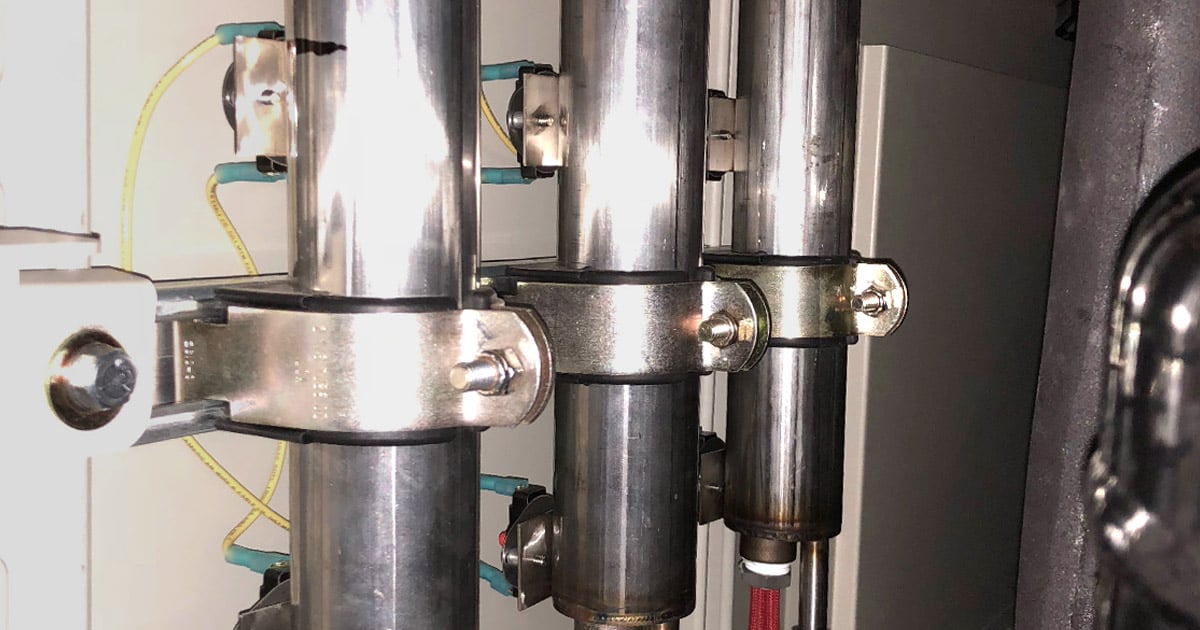How Does a Humidity Test Chamber Work?

To understand the importance of humidity testing, just look at a map of the United States. The products that drive our lives need to work in all climates.
A cell phone should operate the same in the dry heat of the Arizona desert and the high humidity of the Atlantic coast. The same goes for life-saving medical devices, cars, planes, and more.
Companies conduct environmental testing on these products in controlled conditions to confirm they work as designed and understand their failure points. In doing so, these companies can set expectations for consumers or work to fix potential defects prior to going to market.
Here’s what you need to know about humidity test chambers.
Humidity Systems
As temperature increases, the air’s capacity to hold moisture grows. This is why temperature and humidity chambers record humidity as relative humidity (RH) percentage: RH at 5 degrees Celsius is not equivalent to RH at 20 degrees Celsius.
Similarly, dew point, the temperature at which air must be cooled in order for it to condense, must also be accounted for in testing.
Test chamber manufacturers have designed different methods over the years for creating humid conditions. The old-school systems involve atomizing or water pans. You’d find atomizing more commonly now in salt spray chambers where a direct and constant water supply attaches to a nozzle. A thin mist, or fog, drifts into the workspace. The immersion water pan system, on the other hand, is self-evident. A heater immersed in a water pan slowly creates steam that fills the workspace.
However, leading test chamber manufacturers use the more modern vapor generator system. Vapor generators give you precise control over the relative humidity, measured by electronic sensors. They can be sized to fit any chamber, and for larger workspaces. Multiple generators can be used to increase accuracy.
A vapor generator is a closed stainless steel or copper tube. A heating element heats a constant water source creating vapor or steam. The vapor moves to the plenum to mix with the conditioned air before moving into the workspace with the proper temperature and relative humidity.
It’s important to note the quality of the water matters in making the humidity system last. If the water is full of minerals, it can lead to a build-up of sediments. If the water is too clean or pure, it strips minerals from the metal as it travels through the test chamber.
The recommendations vary by manufacturer. Associated Environmental Systems, for example, suggests defined ranges for resistivity (0.05MΩ * cm to 6MΩ * cm), conductivity (20µS to 0.167µS), and total dissolved solids (TDS) (10 ppm to 0.083 ppm).
So in addition to vapor generator systems, test chambers often feature demineralizing cartridges as well to properly condition the water. These should be checked regularly (see below) as should the water itself prior to installing and using your test chamber.
Standard humidity chambers feature an RH range of 20% to 95%, but you can customize your chambers to reach extreme low or high humidity. A special high humidity sensor will enable you to achieve an RH of up to 98% while a desiccant air dryer takes it as low as 5%. Finally, dry-air purging allows you to cycle between extreme humidity conditions.
Humidity Chamber Maintenance
Regular maintenance is crucial for making test chambers last, but it’s arguably more important for humidity chambers. As vital as water is, it can leave problems in its wake.
Sediment can build up in vapor generators. If left untreated, sitting water can lead to the development of mold or mildew. It corrodes metal over time as well. And if you notice leaks or other signs of wear, it’s probably too late for a quick fix.
That’s why the condition of the water matters so much. You should include in-house water tests as part of your quarterly inspections to ensure it falls within the recommended condition range. If you have a demineralizing cartridge, it should be checked monthly. When there's about a quarter of the original color remaining, it's time to replace the cartridge.
You also need to take additional maintenance steps during periods of downtime. Run your chambers even when you aren’t conducting tests to make sure the systems are operating properly. If you’re headed for an extended break, wash the external water tanks and purge the water from the chamber by shutting off the water source and opening the draining valve.
A repair professional should address any issues you spot as soon as possible, but proper care begins as soon as you purchase the chamber. Talk with the manufacturer about setting up a maintenance plan that will keep you testing for 10 years or more.
Purchasing a Humidity Test Chamber
There’s no such thing as a one-size-fits-all test chamber. Your testing requirements and the products, devices, and components you plan to test will determine the characteristics of your chamber.
This goes beyond capabilities. For example, highly active live loads require larger workspaces within the chamber so they don’t affect the specified conditions. The ambient environment in which you’re testing also matters.
It takes an experienced manufacturer to deliver a solution that’s right for you. Associated Environmental Systems builds custom test chambers to fit your specifications. AES has even developed a Dew Point Calculator to help you determine if you'll need optional features such as high humidity sensors and desiccant air dryers. Not to mention, standard chambers come equipped with AESONE CONNECT, a combination of software and hardware that enables remote monitoring and testing.
AES offers support and service plans throughout the life of the test chamber. You’ll test as often as you want, with a leading test chamber manufacturer on your team.
Associated Environmental Systems is an industry leader in designing, building, and maintaining environmental test chambers. Browse our series of temperature and humidity chambers, or contact us if you have more questions regarding testing.


